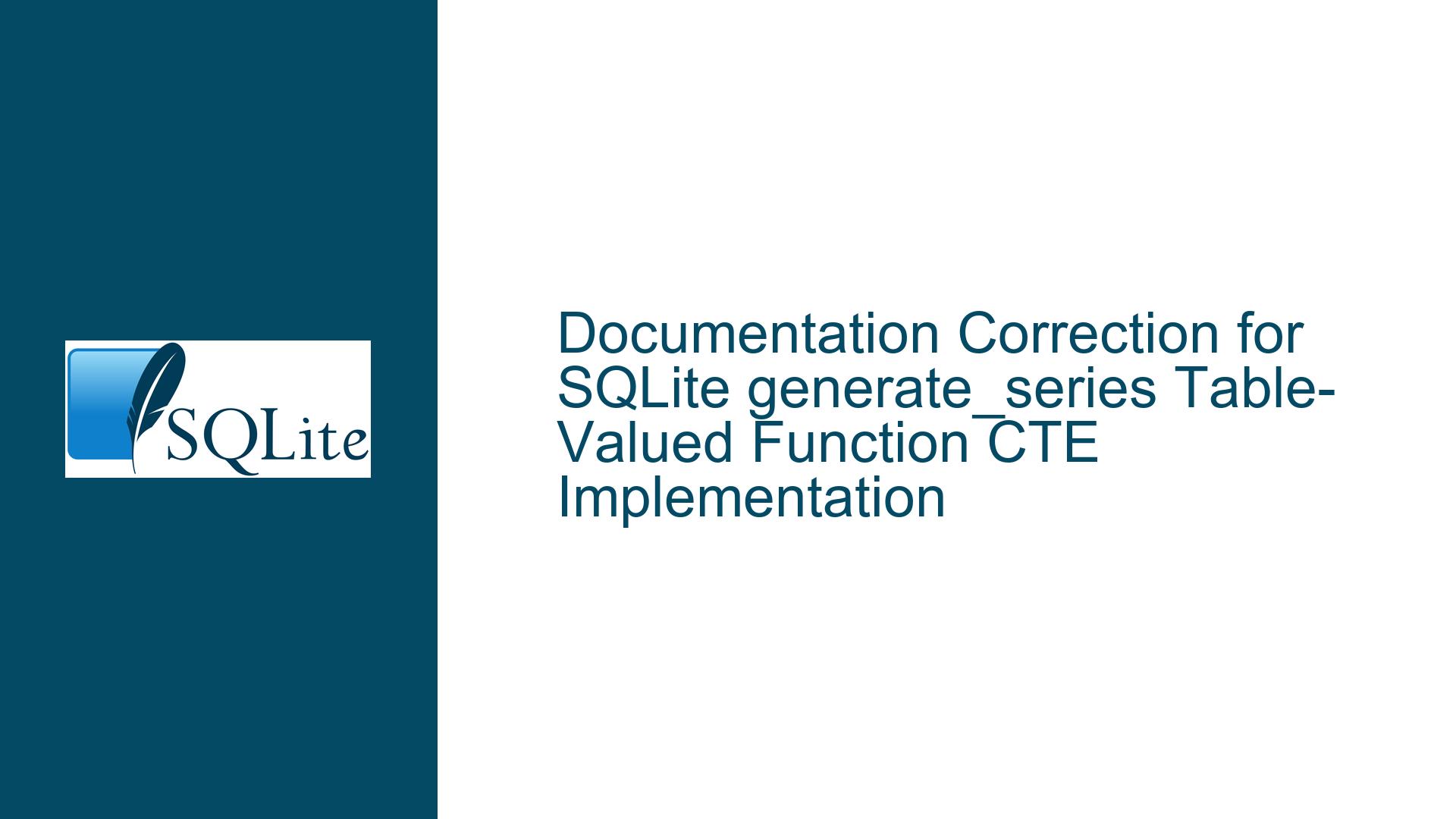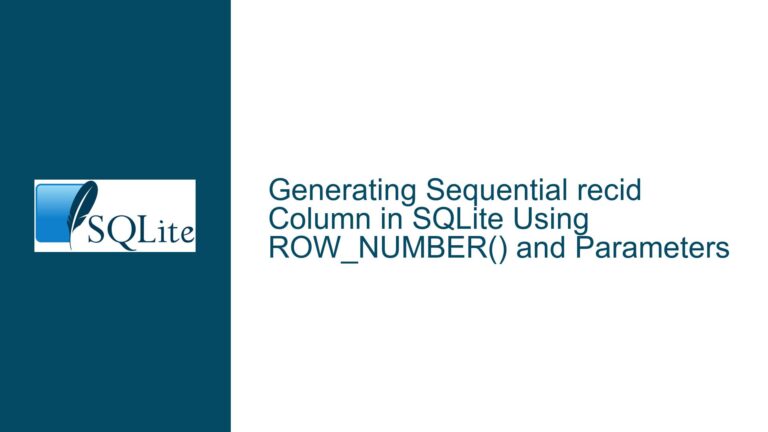Documentation Correction for SQLite generate_series Table-Valued Function CTE Implementation
SQLite generate_series Table-Valued Function CTE Documentation Inaccuracy
The SQLite generate_series table-valued function is a powerful tool for generating sequences of numbers, which is particularly useful in scenarios requiring iterative operations or data generation. However, the current documentation for simulating this function using a recursive Common Table Expression (CTE) contains inaccuracies that can lead to confusion and suboptimal implementations. The proposed CTE in the documentation does not align with the functionality of the generate_series function, particularly in terms of generating sequences with specific start, end, and step values. This discrepancy can result in incorrect query results or unnecessary complexity in SQL code.
The core issue lies in the way the recursive CTE is structured. The documented CTE generates a sequence starting from 0 and increments by 1 indefinitely unless explicitly limited. This approach does not directly translate to the generate_series function, which allows for customizable start, end, and step values. As a result, developers attempting to use the documented CTE as a replacement for generate_series may encounter difficulties in achieving the desired sequence generation, leading to potential errors or inefficiencies in their SQL queries.
Furthermore, the documentation does not adequately address the performance implications of using a recursive CTE versus the generate_series function. While the CTE approach is more portable and does not require loading an extension, it may not be as efficient, especially for large sequences. This lack of clarity can lead to suboptimal choices in query design, particularly in performance-critical applications.
Misalignment Between Recursive CTE and generate_series Functionality
The primary cause of the documentation inaccuracy is the misalignment between the recursive CTE and the generate_series function. The generate_series function is designed to generate a sequence of numbers based on a specified start value, end value, and step size. This allows for precise control over the sequence generation, making it a versatile tool for a wide range of applications. However, the recursive CTE provided in the documentation does not offer the same level of control.
The documented CTE generates a sequence starting from 0 and increments by 1 indefinitely. While this approach can be adapted to generate sequences with different start, end, and step values, it requires additional modifications to the query. This added complexity can lead to errors, particularly for developers who are not familiar with recursive CTEs or who are under time constraints. Additionally, the lack of direct support for customizable start, end, and step values in the documented CTE can result in less readable and maintainable code.
Another contributing factor is the lack of performance considerations in the documentation. The generate_series function is implemented as a table-valued function, which is optimized for generating sequences efficiently. In contrast, recursive CTEs can be less efficient, particularly for large sequences, due to the overhead associated with recursion. The documentation does not provide sufficient guidance on when to use the CTE approach versus the generate_series function, leading to potential performance issues in real-world applications.
Refactoring Recursive CTE for Accurate Sequence Generation and Performance Optimization
To address the documentation inaccuracy, the recursive CTE should be refactored to more closely align with the functionality of the generate_series function. This involves modifying the CTE to support customizable start, end, and step values, as well as providing guidance on performance considerations.
The refactored CTE should be structured as follows:
WITH generate_series(rowNumber) AS (
SELECT $start
UNION ALL
SELECT rowNumber + $step FROM generate_series WHERE rowNumber + $step <= $end
)
SELECT rowNumber FROM generate_series;
In this refactored CTE, the sequence starts at the specified start value ($start) and increments by the specified step size ($step) until it reaches or exceeds the specified end value ($end). This approach provides the same level of control as the generate_series function, making it a more accurate replacement.
To further enhance the usability of the refactored CTE, the documentation should include examples of how to use it in common scenarios, such as generating sequences for date ranges or iterating over a set of values. Additionally, the documentation should provide guidance on performance considerations, including when to use the CTE approach versus the generate_series function.
For example, the documentation could include a performance comparison table:
| Approach | Portability | Performance | Ease of Use |
|---|---|---|---|
| generate_series Function | Low | High | High |
| Recursive CTE | High | Medium | Medium |
This table highlights the trade-offs between the two approaches, helping developers make informed decisions based on their specific requirements.
In conclusion, the current documentation for the generate_series table-valued function contains inaccuracies that can lead to confusion and suboptimal implementations. By refactoring the recursive CTE to more closely align with the functionality of the generate_series function and providing guidance on performance considerations, the documentation can be improved to better serve the needs of SQLite developers. This will result in more accurate, efficient, and maintainable SQL code, ultimately enhancing the overall user experience with SQLite.






